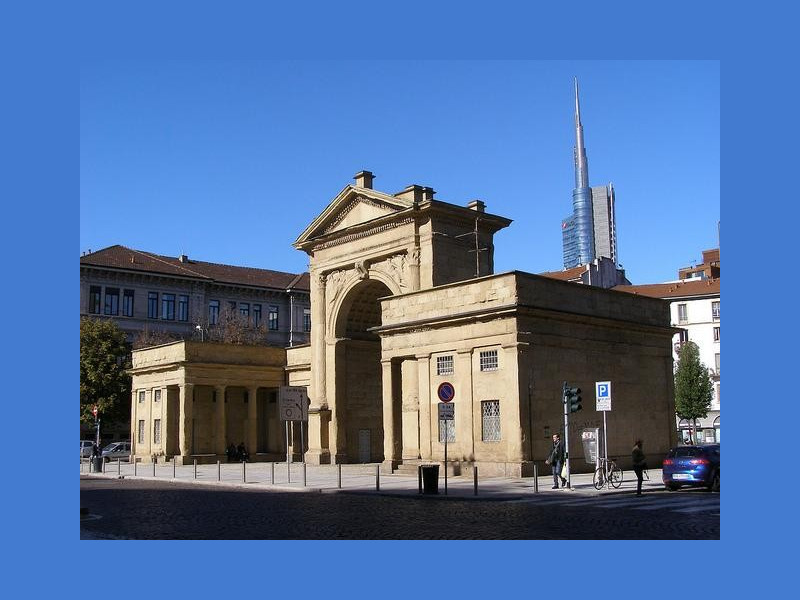Porta Nuova
Porta Nuova is one of the six main gates of Milan, now part of the ramparts, which identified six historic districts in which the city was divided (the District of New Gate). Situated in the north, was access to Monza, decentralized axis road (now Via Manzoni) on which stood the other ports of Roman and medieval. The Spanish port was demolished during the Napoleonic era, when the accesses were converted to toll gates and ornamental function. The current New Gate was rebuilt, again in Piazzale Principessa Clotilde, between 1810 and 1813 and designed by Giuseppe Zanoia. The port value is linked to the presence of the Martesana Canal, once navigable: the Bridge of Taxes along the ramparts, in fact, ran the Redefossi (now filled in) that received the waters of Martesana and, just beyond the Porta Nuova, the Seveso. In 1840 the inauguration of the Porta Nuova train station, the city's first railway station. Today, the Gate is a triumphal arch in Ionic style, built in blocks of sandstone and decorated with bas-reliefs, which connects two toll daziari porches. Since 2005 the whole area (from Porta Garibaldi Square of the Republic) is part of the important urban regeneration project linked to the Management Centre of Milan, aimed at mending the neighborhoods Garibaldi, Island and Varesine.

